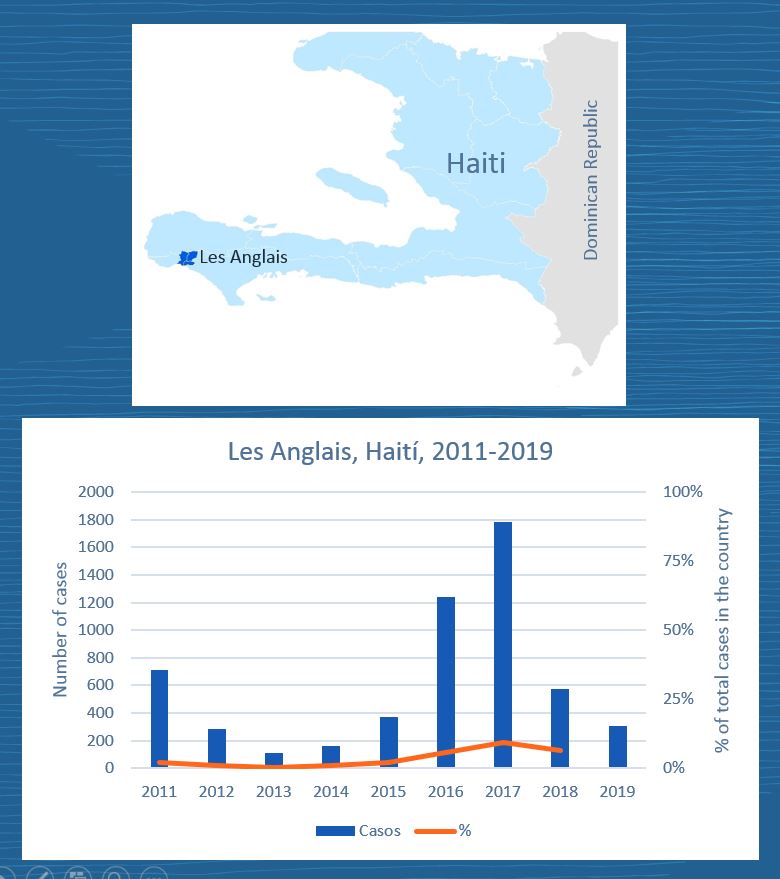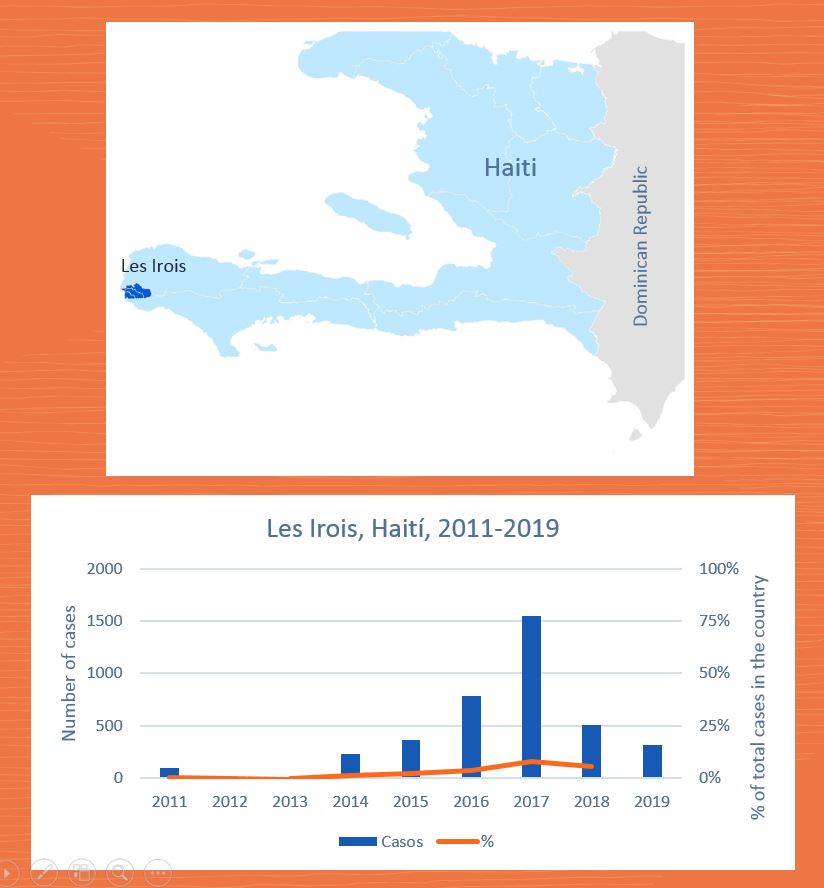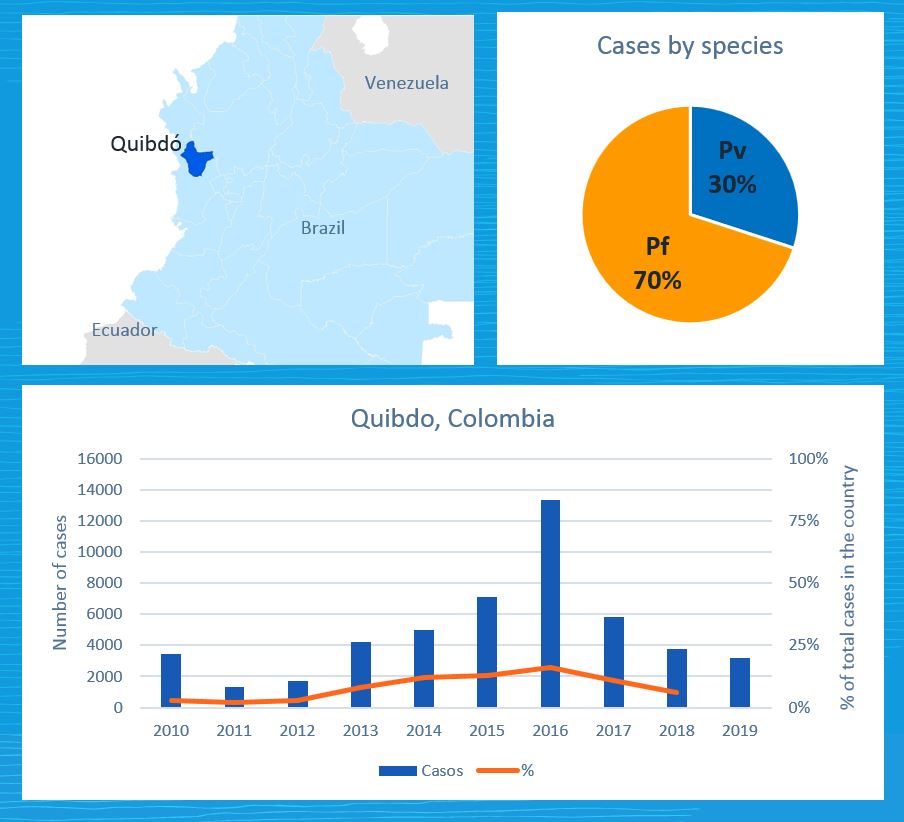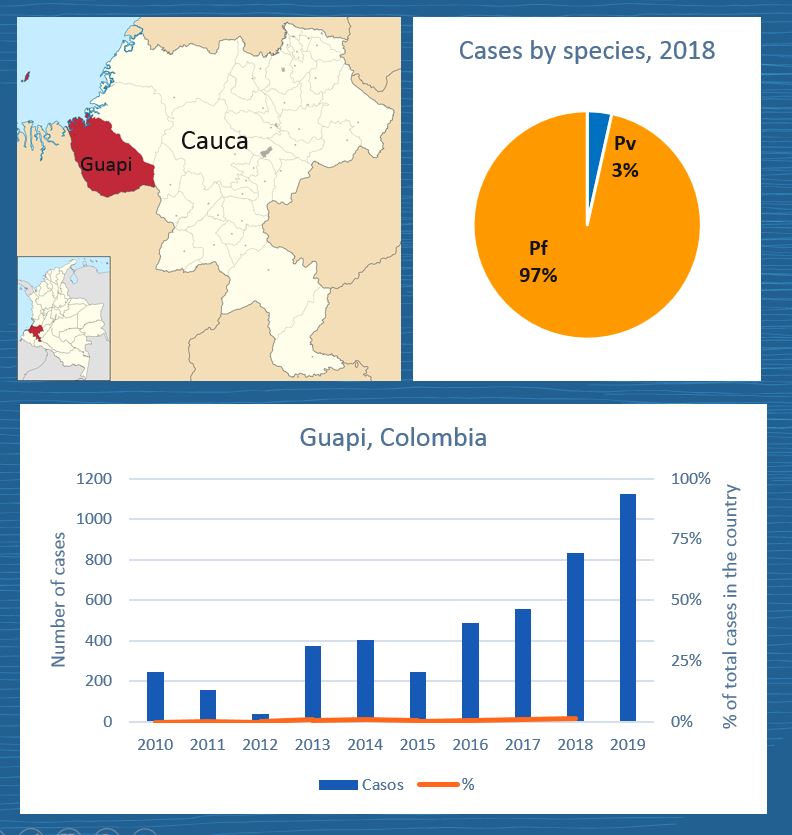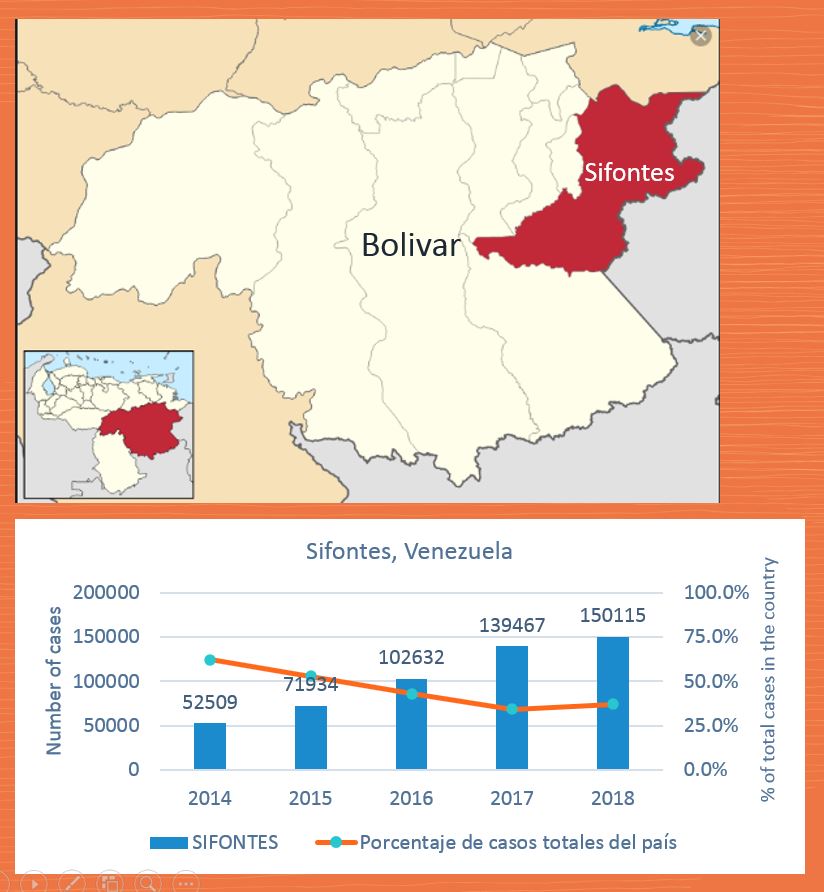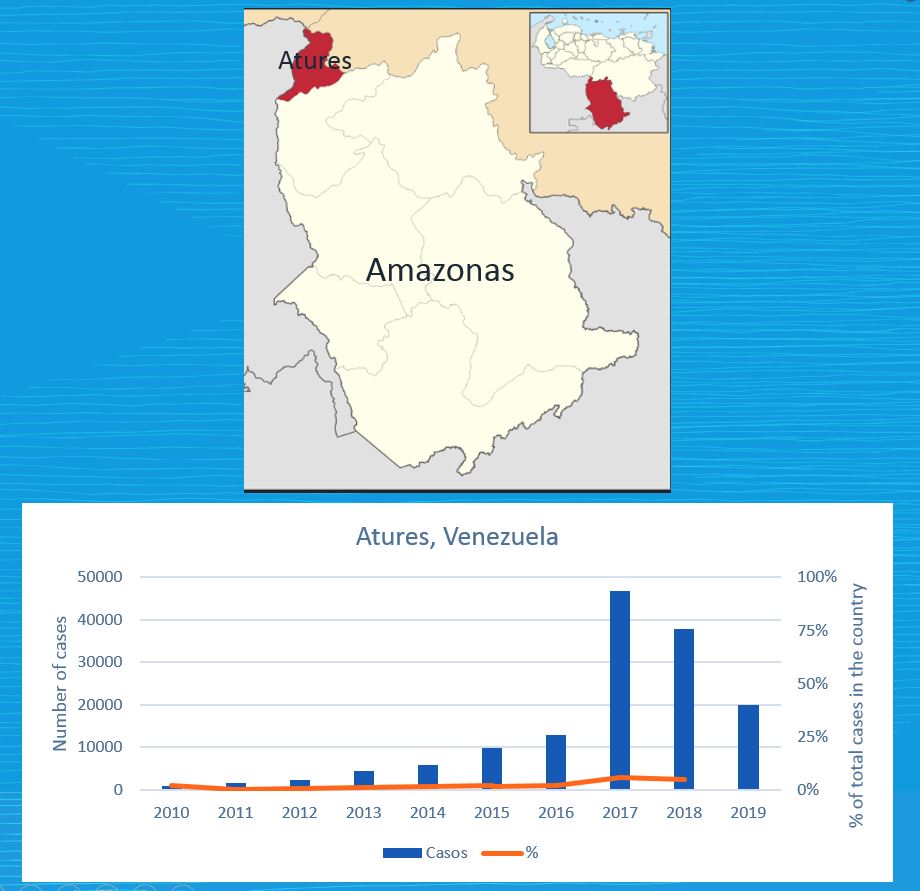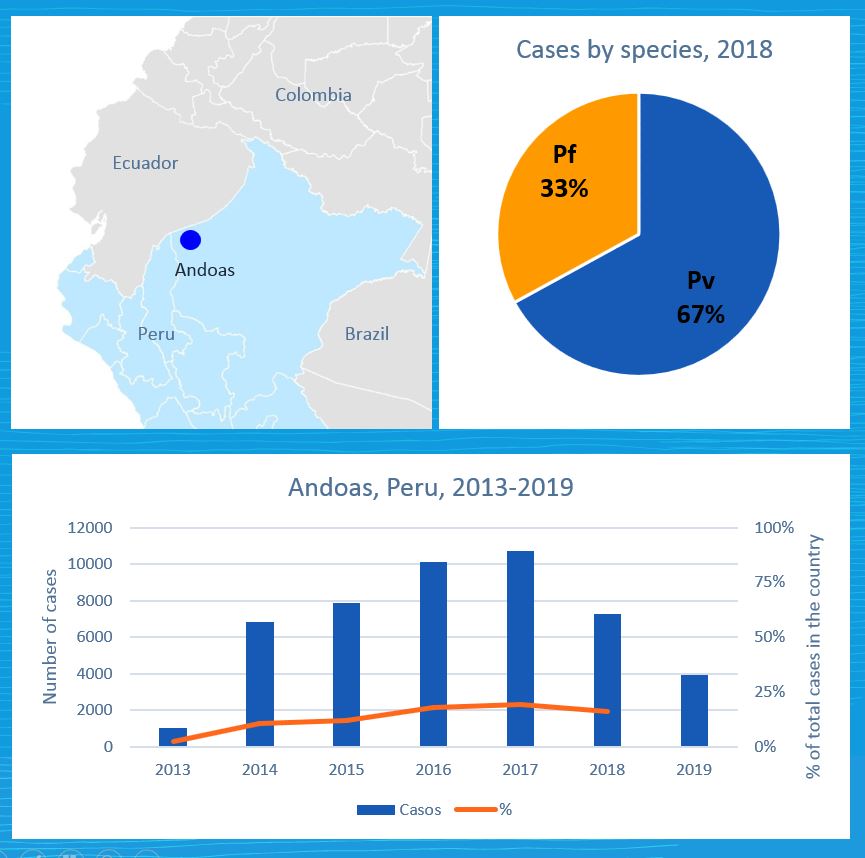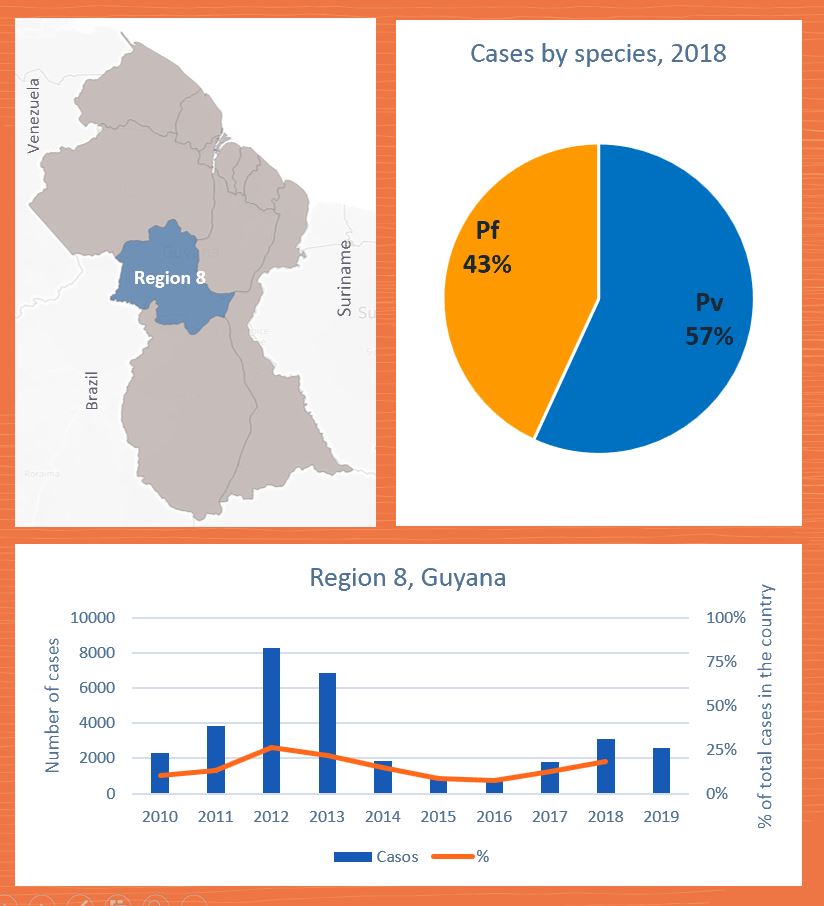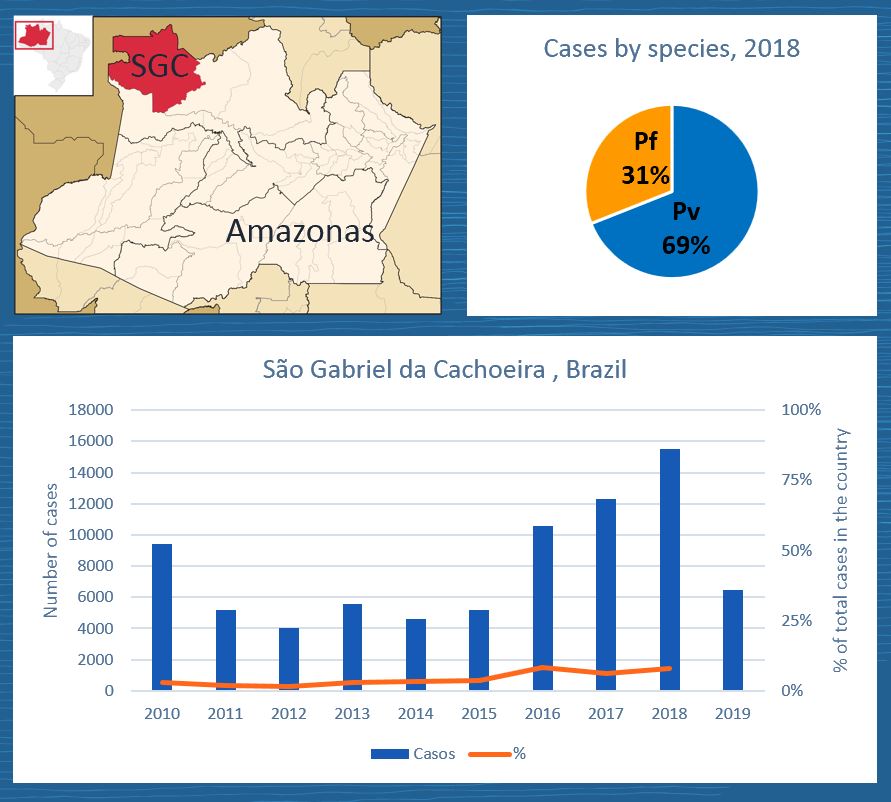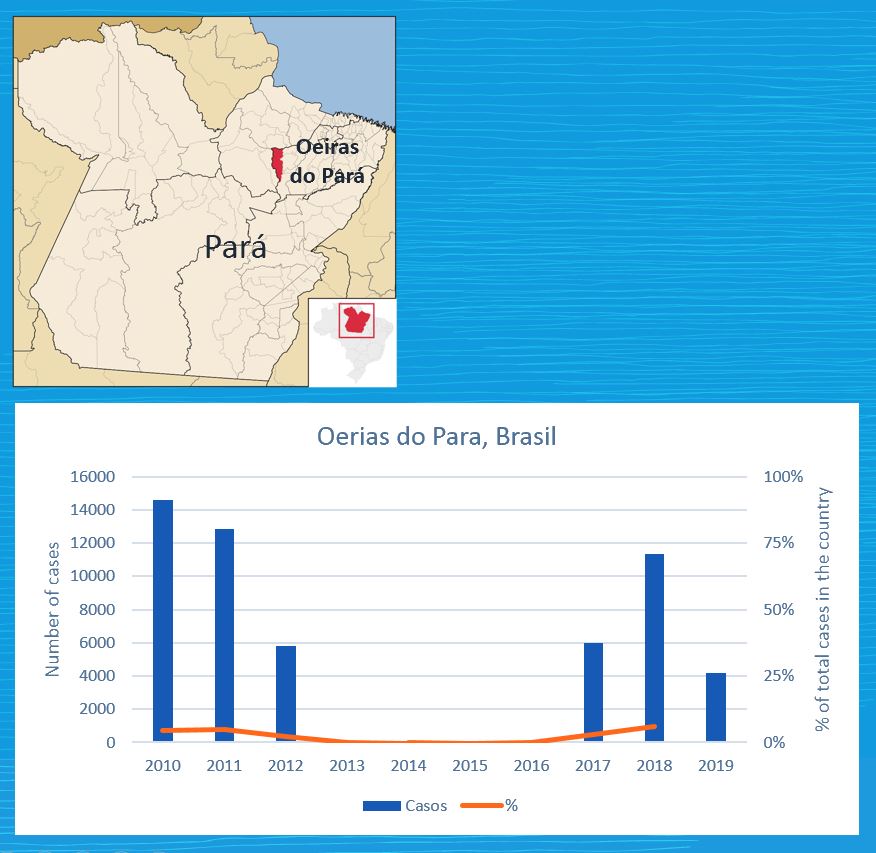Malaria in Les Anglais, Haiti
— Located in the department of Sud
— Mostly rural
— Affected by Hurricane Matthew in October 2016
— Localities around Anglais River and along the coast are most affected
— Only one health unit in the entire commune
— Expanded a CHW network to 23 people throughout the commune in 2019 to facilitate access to malaria diagnosis, treatment and education services
— Operation of this network has allowed for more tests performed and faster diagnosis and treatment with a positive impact for 2019
— Population: 31,737 inhabitants
— Only detected cases of P. falciparum
— Cases decreased by 25% between January-Sept of 2019 compared to 2018.
Malaria in Les Irois, Haiti
— Located on the west coast of the country, in the department of Grand’Anse
— Localities near the major roads and along the coast are the most affected
— Population: 24,818 inhabitants
— 42% of the population is <20 years old
— In 2017, almost 8% of the total cases in the country were reported in Les Irois
— Only detected cases of P. falciparum
— Cases increased by 50% in 2019 compared to 2018 during January-September
Malaria in La Gomera, Guatemala
— Located in the south-central department of Escuintla
— Population: 83,264 inhabitants
— 64% of population live in rural areas and 36% in urban areas
— 64% of population live in poverty and 12% in extreme poverty
— Poor and lower middle-class populations migrate in and out of the country due to conditions of poverty and violence
— Many incomes are earned though agricultural work, mostly in sugarcane, African palm, fruits, corn and beans
— Malaria has a seasonal trend increasing in the dry season (Oct-May)
— La Gomera has not reported cases of P. falciparum since 2014
— Cases were reduced 28% during 2019 between Jan-Oct compared to the same period of 2018
Malaria in Puerto Lempira, Honduras
— Capital of the Gracias a Dios department
— Only accessible by river, sea, or plane
— Shares border with Nicaragua with frequent movement between the two countries
— Estimated population: 52,000 inhabitants
— ~ 170 communities
— Miskita people predominate in the area and are most affected by malaria
— Puerto Lempira had the most cases of P. falciparum throughout Central America during 2014-2016
— In 2018, Puerto Lempira reduced cases by 90% compared to 2016
— Only 139 cases been registered in 2019
Malaria in Puerto Cabezas, Nicaragua
— Located in the northeast region of the country
— Capital of the North Caribbean Coast Autonomous Region (RACCN)
— Miskito ethnic group predominates the area and moves between Nicaragua and Honduras
— Estimated population: 52,000 inhabitants
— 47% population lives in rural areas
— 84% of all cases in the country were reported in Puerto Cabezas in 2018
— Most cases caused by P. vivax, but 5% of cases were caused by P. falciparum in 2018
— Cases were reduced by 18% during 2019 between Jan-Sep compared to the same period during 2018
Malaria in Quibdo, Colombia
— Located in the northwest region of the country
— Capital of the department of Choco
— Close to large ecological reserves and is in one of the most biodiverse regions of the country
— Municipality consists of many indigenous reserves vulnerable to malaria in the area
— Population estimate: 115,711 inhabitants
— 65% of the population lives in the urban area
— 70% of the cases caused by P. falciparum, 30% caused by P. vivax
— Between 2016-2018, 72% of malaria cases decreased
Malaria in Guapi, Colombia
— Located on the Pacific coast of the department of Cauca on the banks of the Guapi River
— Estimated population: 30,000 inhabitants
— 84% of population is Afro-descendant
— Most cases were caused by P. falciparum
— Since 2016 cases are increasing due to risk factors derived from mining and population dynamics
— Registered 1122 malaria cases so far in 2019
Malaria in Sifontes, Venezuela
— Located in the western part of the country, in the state of Bolivar
— Ranked first for highest malaria burden in Venezuela and the entire Americas region
— Mostly rural
— Trend shows an increase of cases since 2012
— In 2018, Sifontes accounted for almost one third of the country's cases
— Transmission occurs throughout the year with epidemic outbreaks closely related to gold mining
— Population: 62,818 inhabitants
— In 2019 so far, 84 024 cases have been registered
Malaria in Atures, Venezuela
— Located in the south east part of the country, in the state of Amazonas
— Mostly rural
— Ranked 2nd for highest malaria burden in Venezuela
— During 2018 - 2019 LLINs were massively distributed
— Trend shows an increase in cases since 2015
— Urban and rural areas, high concentration of populations living in areas of high receptivity
— Population: 104,228 inhabitants
— So far in 2019 there are 19,888 cases registered
Malaria in Andoas, Peru
— Located in the northern part of the country in the Loreto region near the border with Ecuador
— Andoas is located along the Pastaza River
— Mostly rural
— Has the highest malaria burden in the country
— Transmission occurs from both P. falciparum and P. vivax in the municipality
— Increase in the number of promoters performing diagnosis and treatment
— Distribution of mosquito nets in 2018
— 41% decrease in 2019 between Jan-Sept compared to the same period in 2018
Malaria in Region 7 (Cuyuni-Mazaruni), Guyana
— Located in the northwest part of the country
— Various natural regions - forested highlands, hilly sand, clay regions
— Population: 15,342 inhabitants
— People are engaged in gold or diamond mining
— Majority of cases were caused by P. vivax in 2018
— Cases increased 51% in 2019 compared to 2018 for the period of January-September
Malaria in Region 8 (Potaro-Siparuni), Guayana
— Located in the center of the country
— Part of territory disputed by Venezuela (Guayana Esequiba)
— Population: 10,000 inhabitants
— Population work in the forests with mining and timber industries
— 43% of cases in 2018 were caused by P. falciparum
— Cases increased by 23% in 2019 between Jan-Sept compared to the same period of 2018
Malaria in Cruzeiro do Sul, Brasil
— Located in the northwest of the country in the state of Acre
— It is located on the Juruá River on the border of Peru
— Had the highest burden of malaria cases in Brazil in 2018
— Population: 87,673 inhabitants
— There is a mobilization of the population to other high burden municipalities
— 23% cases were caused by P. falciparum
— Cases were reduced by 58% during 2019 between Jan-Sept compared to the same period in 2018
Malaria in São Gabriel do Cachoeira, Brasil
— Located in the northwest part of the country on the banks of the Rio Negro
— Shares a border with Venezuela and Colombia
— Had the 2nd highest burden of malaria cases for Brazil in 2018
— Population: 44,816 inhabitants
— 90% of population is indigenous and the municipality has the highest concentration of ethnic groups in the entire country
— High population mobilization for several reasons
— 31% of cases were caused by P. falciparum
— Cases were reduced by 47% during 2019 between Jan-Sept compared to the same period in 2018
Malaria in Oeiras do Pará, Brasil
— Located in the northern part of the country in the state of Para near the Pará River
— Has a tropical climate, moderate to heavy rains and typical Amazonian vegetation
— Had the 4th highest burden of malaria cases for Brazil in 2018
— Population: 28,595 inhabitants (66% in rural areas)
— 91% of 2018 cases were reported in people living in rural areas
— Only transmission by P. vivax in 2018-2019
— 54% reduction in 2019 (between Jan-Sept) compared to the same period in 2018

